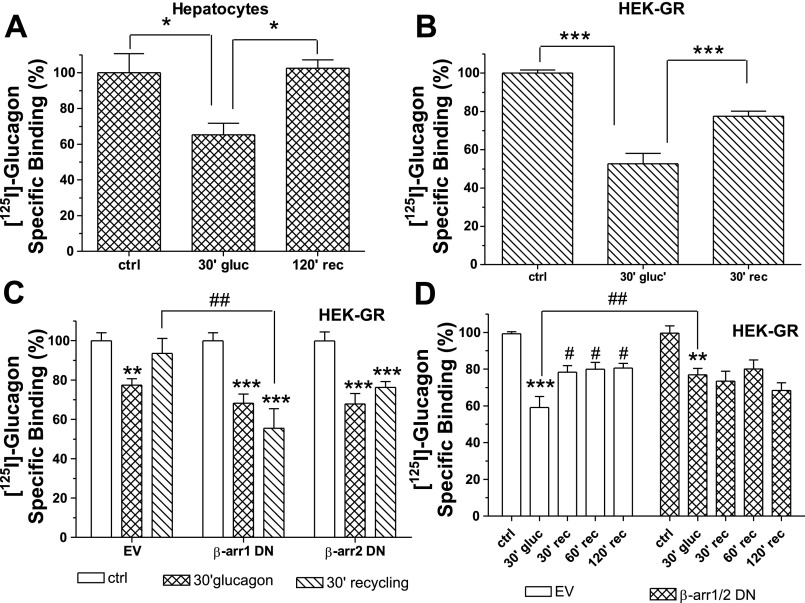Fig. 1.
Glucagon receptor (GR) recycles to the plasma membrane in a β-arrestin-dependent manner: A: hamster hepatocytes were incubated without (control, ctrl) and with 100 nM glucagon (gluc) for 30 min (30′) at 37°C, washed, and then incubated or not at 37° for 120 min recycling (rec). GR expression on the cell surface was determined by radioligand binding (method A). The results shown are means ± SE of 4 independent experiments. *Significantly different: P < 0.05. B: human embryonic kidney (HEK)-293 cells transfected with GR (HEK-GR) were incubated without (ctrl) and with 100 nM glucagon for 30 min at 37°C. For recycling, the cells were washed and then returned to 37°C for 30 min. GR expression on the cell surface was determined by radioligand binding (method B). The results shown are means ± SE of 4 independent experiments. ***Significantly different: P < 0.001. C: HEK-GR cells were transfected with β-arrestin1 (β-arr1) and β-arrestin2 (β-arr2) dominant-negative (DN) mutants or with an empty vector (EV). Recycling was assessed as described in B. Data shown represent means ± SE of 3 independent experiments. **Significantly different from control: P < 0.01; ***significantly different from control: P < 0.001; ##significantly different: P < 0.01. D: HEK-GR cells were transiently cotransfected with both β-arrestin1 and β-arrestin2 DN mutants or empty vector. After 30-min treatment with 100 nM glucagon at 37°C, the cells were washed and incubated up to 120 min at 37°C. The cell surface GR expression level was determined by radioligand binding (method B). Data represent means ± SE of 4 independent experiments. **Significantly different from control: P < 0.01; ***significantly different from control: P < 0.001; #significantly different from 30-min glucagon; ##significantly different: P < 0.05. The data were analyzed by one-way ANOVA and Bonferroni posttest using Prism software (GraphPad Software, San Diego, CA).

